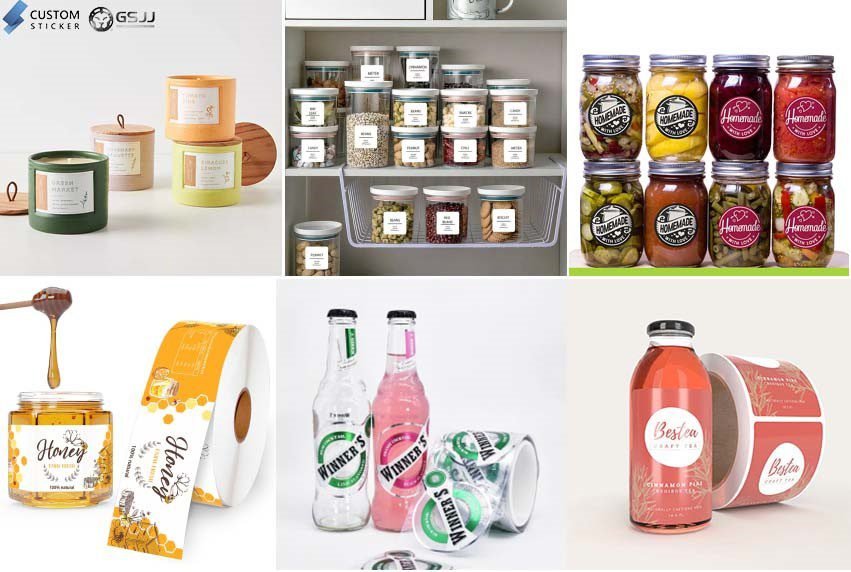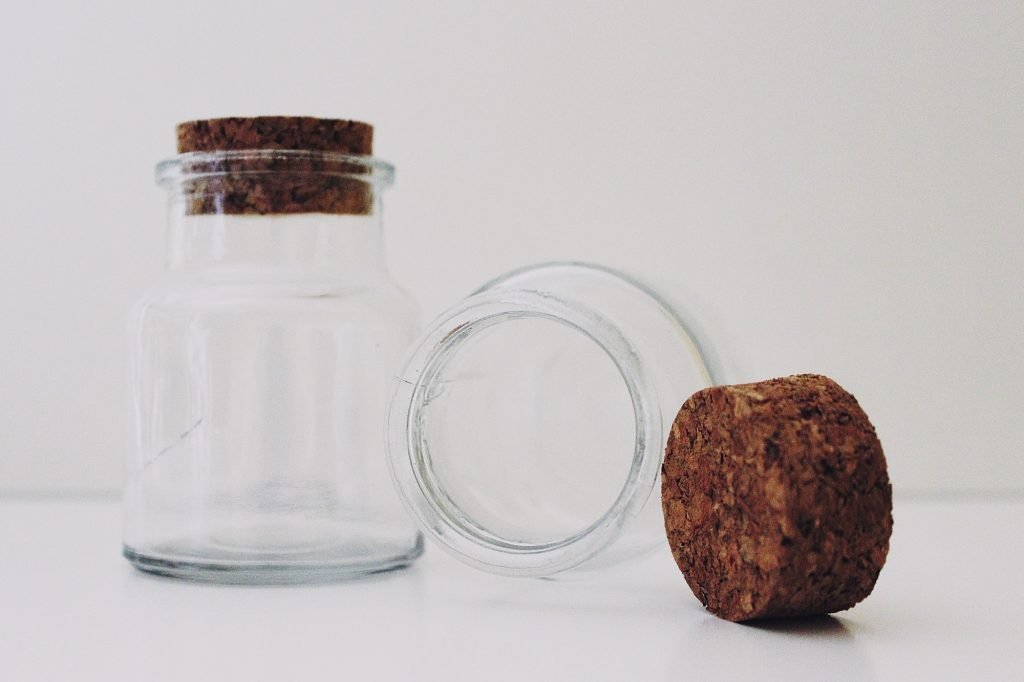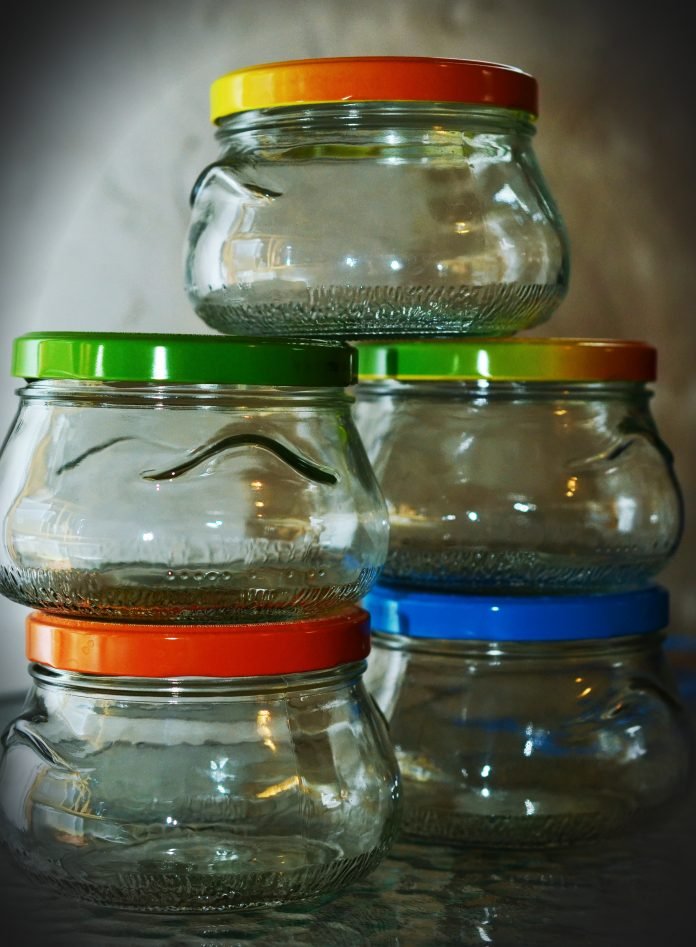Last Updated on February 13, 2023 by admin
Many foods are packaged in cans, glass jars, plastic bottles, and foil pouches. Each type of food packaging has its own advantages and disadvantages for health, for convenience at home or on the go, and also in terms of recycling or disposal after use.
Bottled and jarred packaged goods are known for their convenience factor; there’s no need to fuss with making your own donuts, pies, pickles, or jams. But like all convenience foods, packaged goods come with their share of hidden nasties. Luckily, with a little knowledge and awareness, you can make an educated decision about which packaged goods are worth it and which pose potential health hazards.
Table of Contents
Please note:
When we purchase products bottled and jarred, we have to read the labels attached to them as they will tell you the purpose, efficacy, ingredients, and expiration date. For bottled goods, the label carries complete product information and highlights the temperament and personality of the products. Therefore, custom labels are an essential part of bottled and jarred goods, and the bottled goods merchants should stick personalized labels on the packaging to remind people to read them. When customizing labels, merchants should pay attention to the function of the label, which not only carries the function of transmitting product information but also shows the brand personality through the label. Customizing bottles and can label in bulk, you can click custom labels to get high-quality packaging labels at the most affordable price.

Bottled and Jarred packaged goods.
Bottled goods are items that are sold packaged in plastic bottles or containers made of glass.
Packaged goods are manufactured and sold in containers such as glass jars, cans, plastic tubs, or boxes. They can also be found in cartons or pouches. Some of these include fresh food like meat, dairy products (milk), fruits, vegetables, fish, and shellfish. Other examples include non-food items like shampoo, toothpaste, cleaning products, gardening products, and pet food. Bottled goods are the most convenient and time-saving way to prepare and serve food. However, not all bottled goods are created equal. Some bottled items are more nutritious than others, for instance. For example, some bottled juice has more vitamin C than fresh produce; other bottled drinks can be loaded with sugar or high fructose corn syrup, leading to obesity and other health issues later on down the road.
What are packaged goods? What is their value to manufacturers, suppliers, and customers?
Packaged goods are the products of manufacturing that are not in bulk form. They go through some sort of elaboration stage before they can be sold or even touched by human hands. They usually come in containers like bottles, jars, packets, tins, boxes, and cans.
Packaging protects goods from contamination, damage, tampering, and pilferage; it ensures the quality of the product, and increases convenience to customers by making storage and transport easier; it economizes on containers used: fewer materials and space are required for merchandising.
Are packaged goods safe to eat?
Most packaged goods are safe to eat. However, some do require proper handling and storage to prevent contamination from dirt, mold, or bacteria. Packaged fruits and vegetables should be eaten as soon as possible, or they can spoil quickly. Some packaged goods need to be heated up before eating.
When it comes to buying packaged goods, there seems to be a spectrum of options in the grocery store. The processed commodities are often cheaper and more convenient at one end, displaying their long shelf life as a benefit. At the other end are expensive boutique items that boast locally-sourced ingredients and natural preservatives. Somewhere in the middle are the items that offer convenience without sacrificing flavor.
Bottled water has become a staple for many busy consumers who are looking for an alternative to tap water, which may contain extra chemicals or microbes. Many packaged foods can be found packaged in glass jars, offering the health-conscious another alternative to cans. Glass jars can be reused or recycled, and they do not contain any harmful chemicals that may leach into foods.
To help bring these benefits to light, we’ve created top reasons why bottled and jarred packaged goods are better for consumers.
Top reasons why bottled and jarred packaged goods are better for consumers.
- Plastic bottles are more likely to leach harmful chemicals into the water they contain.
- Glass jarred foods can be frozen without fear of chemicals seeping into the food contained within it.
- Bottled water containers can weigh up to a pound and a half, often taking more fuel to ship than other bottled goods.
- Glass jarred food is better for the planet because it can be reused or recycled, whereas plastic bottles cannot.
- Petroleum used in plastic production is not as renewable as glass, which can be recycled infinitely without losing its integrity.
- Glass jars can be micro-waved safely, even if the label warns against it.
- Plastic bottles are more costly than glass jars and consume significantly more energy to produce and recycle.
- Glass jarred foods may be preferable for those who want to avoid certain metals that linger in plastic containers and bottles, which can impart a strange taste to the food.
- Plastic bottle caps are not secure enough to reseal, whereas glass jar lids provide a tight seal that prevents spilling and waste of food.
- Jarred goods keep the product contained fresh longer than canned goods due to their lack of metal components, which can leach into foods over time.
- Glass jarred food items may be preferable for those who are concerned about the preservation of the product inside of the jar or bottle.
Benefits of bottled and jarred packaged goods.

Bottled and glass jarred goods offer numerous benefits over their counterparts, including the lack of metal components in glass jars that can leach into foods. There are many reasons why consumers prefer bottled and jarred goods.
Read More: Bottled Water Versus Tap Water That is Better?
Jarred products are hygienic. They are packed in containers that protect them from dirt and bacteria. The lids on jars can be tightly closed, which reduces the amount of air entering the container. This means the product stays fresh longer. When you open your jar, you don’t need to use an opener. You can instead carefully pry off the lid with a table knife or bottle opener. Here are some Key Benefits of using Bottled and Jarred goods:
Cost Savings
Bottled and jarred packaged goods can provide cost savings in a number of ways:
- Shelf life: Packaging in bottles and jars can help extend the shelf life of products such as condiments, sauces, and jams, reducing waste and the need for frequent replacement. This results in cost savings by reducing the need for frequent restocking and reducing food waste.
- Portability: Bottled and jarred goods are convenient and easy to transport, making them ideal for on-the-go consumption. This saves costs by reducing the need for separate packaging or containers.
- Reduced packaging costs: Using bottles and jars can be more cost-effective than other packaging methods, such as bags or boxes. This is because the materials used in bottle and jar production are often cheaper and more readily available.
- Increased product visibility: Bottles and jars often feature a clear design, allowing consumers to see the product inside easily. This can increase product visibility and attract customers, leading to increased sales and cost savings.
- Easier storage: Bottles and jars often take up less space than other types of packaging, making them easier to store and transport. This results in cost savings by reducing the need for larger storage facilities.
Overall, bottled and jarred packaged goods offer several advantages that can result in cost savings for manufacturers, retailers, and consumers.
Food Safety
Food safety is one of the most important factors to consider when purchasing food. Not only do packaged goods offer convenience and ease of use, but they also provide an assurance that your food has been properly stored and preserved. Consumers should take into account how their food was processed before it arrived on store shelves, as this can make a big difference in the quality and safety of the items.
Bottled and jarred packaged foods are considered safe because of the steps taken during the production process to ensure their safety:
- Sterilization: Bottles and jars are sterilized before filling with food products to ensure they are free of bacteria and other microorganisms.
- Airtight seals: Bottles and jars are designed with airtight seals to prevent air and bacteria from entering the package and contaminating the food.
- Use of food-grade materials: Bottles and jars used for food packaging are made from food-grade materials that are safe for food contact.
- Compliance with regulations: Bottled and jarred food products are subject to strict regulations to ensure their safety. These regulations cover everything from the materials used in the packaging to the labeling and nutritional information.
- Food handling practices: The food products themselves are produced using safe food handling practices, including the use of safe ingredients, proper cooking and storage temperatures, and good hygiene practices.
By following these guidelines and procedures, bottled and jarred packaged foods are considered safe for consumption. However, it’s always a good idea to check the expiration date, storage instructions, and any other information provided on the label before consuming.
Environmental Impact
Packaged food is a staple of many households and can provide convenience, nutrition, and delicious meals. However, the environmental impact of these goods has been a major source of debate. Bottled and jarred packaged goods are especially concerning for environmentalists due to their potential for non-recyclable waste. Despite this risk, there are still some benefits to be considered when choosing between bottled or jarred packaged goods. The production and disposal of bottled and jarred packaged goods can have a significant impact on the environment:
- Plastic waste: It is estimated that by 2050, the amount of global waste generated will rise to 3.4 billion tonnes. Plastic bottles are a major contributor to waste, as they take hundreds of years to degrade and can harm wildlife and marine life when they end up in the ocean.
- Energy consumption: The production of bottled and jarred goods requires significant amounts of energy, including the production of the packaging materials, the manufacturing process, and transportation to retail stores.
- Greenhouse gas emissions: The production and transportation of bottled and jarred goods can also contribute to greenhouse gas emissions, contributing to climate change.
- Resource depletion: The production of bottled and jarred goods can also result in the depletion of natural resources, such as water and oil, used in the production of packaging materials.
To reduce the environmental impact of bottled and jarred packaged goods, it’s important to recycle and use reusable containers whenever possible. Many companies are also making efforts to reduce their environmental footprint by using more sustainable packaging materials, such as glass or biodegradable plastics. Consumers can also play a role by choosing products with eco-friendly packaging, supporting companies with environmentally responsible practices, and properly disposing of their waste.
Disadvantages
- It’s difficult to recycle clear glass because recycling facilities have different processes for recycling different colored materials, so if your bottle is clear, it may be harder to recycle. While recycling facilities for glass bottles exist in most countries, not all communities recycle them.
- Bottles can also break. One way to save money is to use small quantities of product at a time and store the rest in jars or tubs.
Some packaged goods to avoid buying
The following is a list of some packaged goods to avoid buying:
1) Agave Syrup
Not only does agave syrup come with a hefty price tag, but it also has a bitter-sweet taste that is worsened when it is heated.
In addition to the health detriments associated with agave syrup, there are plenty of other alternatives on the market that can be used as sweeteners without worrying about the negative side effects.
2) Vegetable Oil
Oils such as canola, soybean, vegetable, and corn oil are often derived from genetically modified ingredients.
When you choose packaged foods that contain these oils, you are subjecting your body to the negative health effects associated with genetic modification. These include chronic inflammation and a potential risk factor for cancer.
3) Anything “Enriched”
“Enriched” seems like such a harmless word, but it packs a health punch.
“Enriched” is often used to describe flour, bread, and pasta that has been robbed of its nutritional value in order to make it palatable for the consumer. When you eat “enriched” products, you are subjecting your body to low-nutrition products that will likely leave you feeling sluggish and tired.
4) Anything “Fortified”
Although this word sounds similar to “Enriched,” it means the complete opposite. When you eat foods that are fortified, it means those who developed the product have added a vitamin or mineral supplement to the food in order to compensate for an actual nutritional deficiency.
Summary
Bottled and jarred goods are foods that have been processed, canned, or sealed in an airtight container. Food spoilage is caused by microorganisms that grow under conditions of high moisture content and suitable temperature. Once the food has passed the microorganism stage, it becomes safe to eat – although its taste may be affected.
Bottled goods are commercially sterile products that have been processed to kill microorganisms. Jarred goods are also commercially sterile but require no further processing or cooking before they are eaten.
Basic preservatives used in bottled and jarred food include salt, sugar, nitrates, mineral salts, acids, and curing agents such as sulfates or glucon.




















